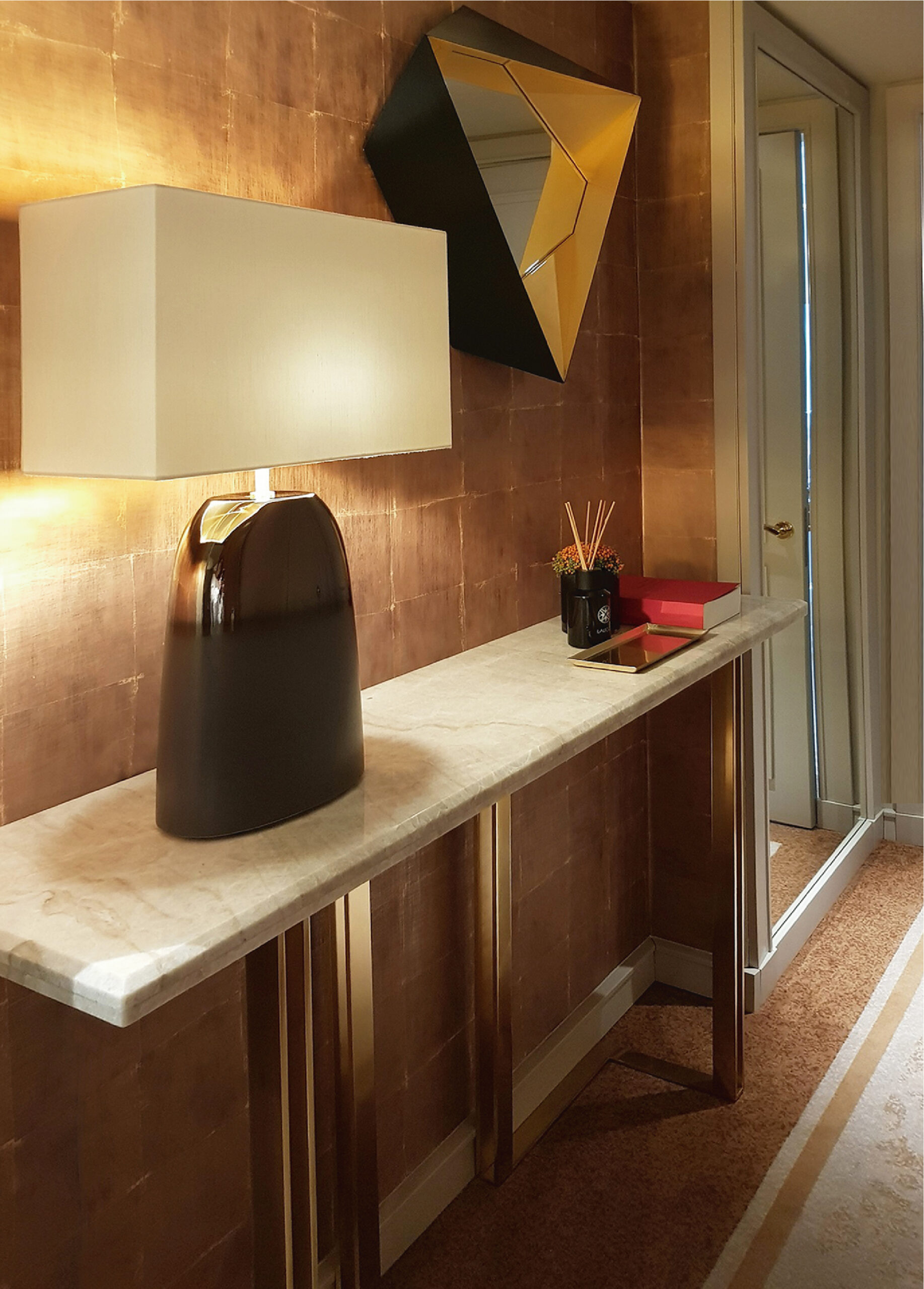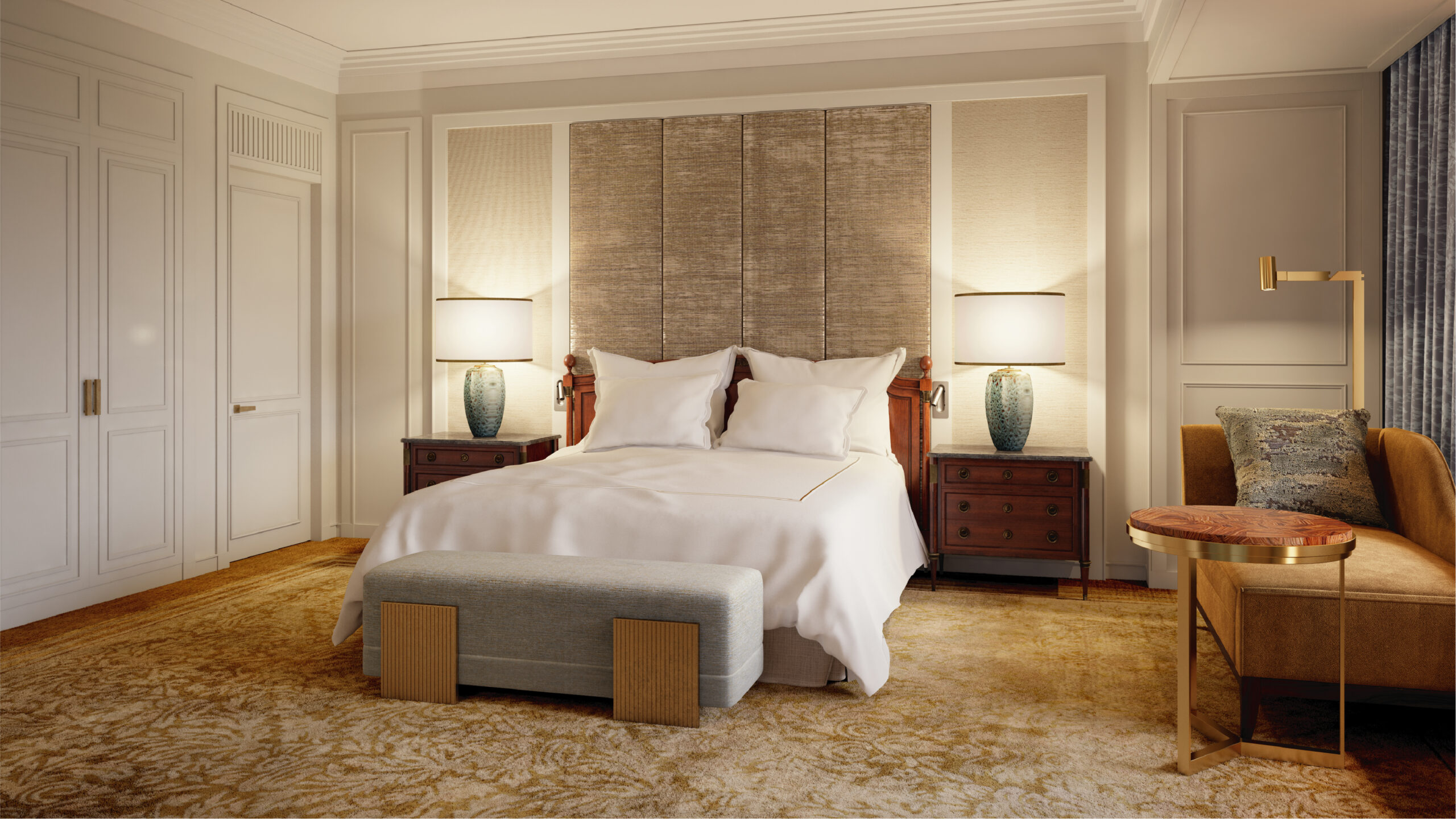An iconic 1950s hotel, the Four Seasons Ritz is practically a compendium of Portuguese decorative arts. While the entrance lobby was classified, remaining practically unchanged since its construction, the guest rooms and suites were remodeled in the 1980s by French interior designer Pierre-Yves Rochon. Recasting the modernity of the existing equipment, the designer brought classicism to the interior of the guest rooms, inspired by Louis XVI, Art Deco and Biedermeier styles.
The interventions that the guest rooms underwent over the next 40 years, justified by the need for maintenance and technical adaptations, led to the progressive stripping away of their distinctiveness, accentuated by the outdatedness of the existing solutions. The persistence of this situation was only possible because of the quality of the original spaces and construction of the building.

RITZ FOUR SEASONS
LISBON, PORTUGAL

The proposal developed by Pilar Paiva de Sousa for a new remodeling of the guest rooms was based on the owner’s premise that it should incorporate the existing furniture of different styles. The classified common areas retained the timelessness instilled by Henri Samuel, combining Art Deco trends with Louis XVI style, amplified by the choice of materials used and the unparalleled quality and finishes of traditional Portuguese craftsmen. A number of prominent Portuguese artists, painters and sculptors were invited to add their own individual and vibrant mark through the decorative arts. In this regard, the proposal developed by PPS sought an architectural approach with a language in line with the eclectic style of Henri Samuel and Lucien Donnat that would provide, on the one hand, an elegant foundation for the integration of the different styles of furniture and, on the other, a common thread between the guest rooms.
In this proposal, details of revisited 1940s’ designs, soft colors and high-end materials contributed to a harmonious blend of styles. Art is present inside the guest rooms through bas-relief panels created by artist Iva Viana, representing the second Portuguese decorative art: stuccowork.





